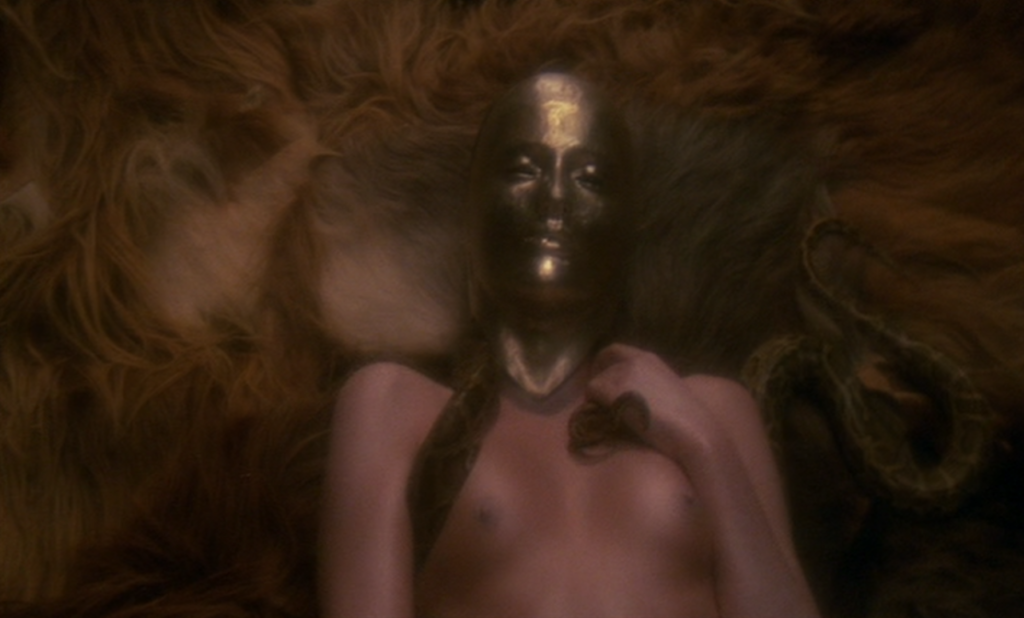
Made during the height of the “Sword & Sorcery” boom, Conquest (1983) is the low budget Italian entry into the genre. It’s a film that has polarized critics and audiences alike. Some dislike the film for its smoke drenched, hazy visuals, others for its minimal plot, and others still for the gore. Those who have championed Conquest often do so for the very reasons that others dismiss the picture. Admittedly it can be difficult to appreciate a low budget genre picture without a broader context. So it comes as no surprise that those who champion Conquest are also devotees of its director, the infamous Lucio Fulci.
Producer Giovanni Di Clemente clearly wanted Conquest to be a combination of the aspects of Excalibur (1981), The Beastmaster (1982) and Conan The Barbarian (1982) that he thought were the most marketable. It’s easy to see the different elements of these films peppered throughout Conquest yet, I would argue, Conquest manages to rise above being a mere cash-in. If you watch Conquest and are relatively familiar with the genre before hand it becomes clear that Fulci is approaching the material more as an artist than one would expect.
For instance, Fulci understands that with High Fantasy one either does a tremendous amount of world building or keeps the narrative moving quickly from episode to episode relying on familiar cues and motifs to signify a general meaning or context to the audience. This is the same approach that Vicente Segrelles uses in his much acclaimed comic El Mercenario. For Fulci though this tactic also allows him to focus more on the atmospheric end of world building which, in the case of Conquest, is utilizing smoke and lens flare to create an otherworldly environment unlike anything else in the cinema.
The expediency of the narrative also means that Fulci has to trade in familiar signifiers when it comes to characters, at least when he doesn’t just allow a supporting role to become caricature. Ocron (Sabrina Siani), the evil witch, is designed as a sort of synthesis of Mordred and Morgana from Excalibur while the hero, Mace (Jorge Rivero), is half Conan and half The Beastmaster. This doesn’t hurt the film the way it may have in another filmmaker’s hands because Fulci structures the film as a series of rapid fire spectacles that paint moral ideas in broad, grand gestures. Conquest is, in many respects, more effective at its storytelling without sound rather than with it, thus locking it in step aesthetically with the silent pulp serials of the later silent era of cinema.
However Fulci is always Fulci, so Conquest is steeped in gore. Films like Excalibur and Dragonslayer (1981) use gore as a visual punctuation to only the most harrowing scenes of violence. In Fulci’s fantasy realm of Conquest all violence gets the gore treatment. So on the one hand the filmmaker is employing his usual tactics to sensationalize yet on the other the pervasiveness of gore within the genre of High Fantasy lends to proceedings a degree of realism and authenticity. Most films in this genre are traditionally dependent on a target audience in their teens and early twenties and have to meet a PG-13 or soft R rating to make their money back so they avoid the kind of bloody violence one sees in Conquest.
With Conquest, as with most of Lucio Fulci’s films, you either “get it” or you don’t. The difficulty in assessing films by artists who worked in genre films on predominantly low budgets is that it can be almost impossible to see the artistry when so many of these films look like trash on the surface. To appreciate these filmmakers one first has to get to know the genres they are working in, which can be a monumental task to some. It’s perfectly understandable if one can’t get past the special effects and creature costumes in Conquest that look like they were taken from the BBC’s The Lion, The Witch, And The Wardrobe (1988). But if one can get beyond these superficial limitations one is more than well rewarded.
